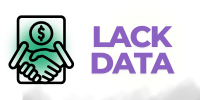Imagine you run a century-old family business worth millions, and the hard-earned algorithms — the ones that power your 56 greenhouses — are trapped in a 30-year-old application. A legacy system, some say.
According to Forbes, 44% of CXOs consider lebanon telegram data legacy systems as one of the core barriers on their path to achieving a competitive edge. That is mostly because the outdated app could be written with a programming language that lost support over a decade ago. Or, the team that built it is long gone.
In general, your old app may work only on Windows machines. That is to say, you can’t access it from your phone or browser. It sits on an unprotected server. And you keep asking, “How much longer can this setup work?”
In theory, you are good to last for another thirty years: those algorithms have gotten you through almost half a century and made your business a success. But in practice, your competition will probably oust you by then. So how do you deal with this?
Read on to learn how we helped this plant-growing company and other businesses deal with digital transformation and make sense of legacy system modernization.
What Is a Legacy System?
It’s not like there is a strict dictionary definition of a legacy system or software. Still, you know when you’re dealing with one, right?
As a CIO, VP of Technology, or CTO, you’ve probably best practices for legacy software modernization inherited a software platform that serves as the backbone for nearly all business processes at your place. And you know it’s legacy by definition because you did not architect it — your predecessors did.
But what if you are a CEO or a Product Executive trying to figure out if your operations rely on an old infrastructure? Well, the first sign is you and your employees become grumpy about using the software. But let’s look at some other symptoms that indicate it’s time to modernize legacy systems.
Legacy System Symptoms
|
Symptoms
|
Impact
|
|---|---|
| Software hinders productivity and innovation | Your app can’t handle new market demands, upscale offerings, or optimize processes. |
| No one owns the system | All issues and bugs, even if mission-critical, remain unresolved as there is no ew leads responsible department for updates. |
| Customer support cost escalates all of a sudden | You spend a fortune on maintenance but get no tangible results. Your product needs a critical review. |
